The 4th of July is always a time of festivity. It is also a time of reflection about our democracy. In Iowa, changes were enacted to our voting laws earlier this year, which will restrict our access to the polls this fall and in future elections. We need to push back in 2022 and ask our legislators to restore our voting rights, increase time for absentee balloting, and improve access to satellite voting.
Pam Mackey Taylor, Chapter Director and Newsletter Editor
What you can do to help the environment
-
Join Sierra Club Iowa Chapter and Iowa Environmental Council for an eye-opening webinar panel discussion about how Iowa is sacrificing our water for big ag on Tuesday, June 29, 2021, from 7:00pm to 8:30pm. RSVP here for access information.
-
Join a rally or mobilization for DEADLINE FOR DEMOCRACY – June 28 to July 10. For more information
-
Take some time to enjoy Iowa's outdoors. Hike, picnic, paddle, and visit the state's rivers, parks, and recreation areas.
In this issue of the Iowa Sierran
Agriculture and Factory Farms
-
Webinar: Supreme Beef and Iowa's CAFO Problem: Sacrificing Iowa's Water for Big Ag. Tuesday, June 29, 2021, from 7:00pm to 8:30pm.
Climate Change
Natural Areas
Legislature
-
Legislature Wrap-up – Wins and Losses, Things Not Addressed
Plus
- Contribute to the Iowa Chapter
- To see the archive of previous Iowa Chapter newsletters
- To see the White Pine Needle newsletter
The Summer of Soil
By Jessica Mazour
Iowa’s soils were created over thousands of years through the interaction of wind, water and weather, and further modified by the movement of glaciers and by the presence of various animal and plant species. As agriculture industrialized, these soils experienced accelerated rates of erosion as they came to be dominated by just two annual crops, corn and soybeans.
This industrialized model of agriculture destroyed the very thing that makes us an agricultural state - our soil. Soil is eroding faster than it can replenish itself, our water is filled with toxic chemicals and manure runoff, air quality in rural areas is causing premature deaths, and a 2019 Iowa State University study showed that 44% of producers were struggling to cover their bills. [1]
We are currently trapped in a system that tells us “fence row to fence row farming”, “get big or get out”, “feed the world”, and “if we change anything with agriculture, we will destroy the economy”. None of that is true. We CAN build an agriculture system that regenerates the soil, protects our air and water, and makes sure farmers are financially secure.
This summer we will be highlighting farmers and landowners across the state who have transformed their farms into regenerative ones and those who are beginning the transition.
Changes slowly happening in Buena Vista County:
On a cold, windy April day I drove up to Storm Lake, Iowa in Buena Vista County to visit with Sierra Club member and landowner, Mike Henning, to see how they are installing prairie strips and grass waterways on a 60 acres farm.
As I was driving up there, Mike asked me to count the fields with cover crops. I counted only three fields with cover crops. On both sides of the highway I saw nothing but back dirt and a few fields with remaining crop residue from last year's crop. If you see residue from last year's crop, that means they either haven't tilled yet or are implementing no-till practices. Hopefully it’s the latter.
Remember the Des Moines Water Works lawsuit from a few years back? Buena Vista County was one of the three counties named in the lawsuit for uncontrolled runoff through tilelines that makes its way downstream to Des Moines. Mike’s working with his farmer, Tim Peterson, and the NRCS and FSA to begin implementing conservation practices like no-till, cover crops, grass waterways, prairie strips and more on his Storm Lake farm.
Grass Waterways are broad, shallow channels that are seeded to grass or other vegetation to carry surface water across a field without causing soil erosion. The vegetative cover and deep root system in the waterway slows the runoff water flow and traps sediment in runoff water, and provides cover and habitat for small birds and animals. [2&3]
Prairie Strips are strips of native perennial vegetation placed in a field. “Science-based Trials of Row Crops Integrated with Prairie Strips (STRIPS) showed that converting just 10% of a row-cropped field to prairie strips reduces soil loss by 95%, reduces overland water flow by 37%, and reduces the loss of nitrogen and phosphorus from the soil by nearly 70% and 77%, respectively. It also leads to greater abundance and diversity of beneficial insects, pollinators, and birds.” [4]
Grass waterways and prairie strips are two options listed in the Nutrient Reduction Strategy as methods to reduce runoff. Many farmers are installing in-field and edge-of-field practices like grass waterways and prairie strips but just look outside when you’re driving through the country and you’ll notice that we have a long way to go to make sure simple practices like these are in every field.
When I arrived, crews were already hard at work moving soil. Mike’s wife Barbara recently inherited this part of her home farm and he wanted to make sure he found a farmer that’s willing to implement good practices because of the proximity and potential for runoff to drain into Storm Lake.
Two adjoining farms have grass waterways to help control and filter runoff from the fields. But, the grass waterway in Mike’s field was plowed up and row cropped. Mike and his farmer, Tim, are rebuilding the grass waterway and installing Prairie Strips on three sides of the field! Two strips are 30 ft wide and one is 100 ft wide.
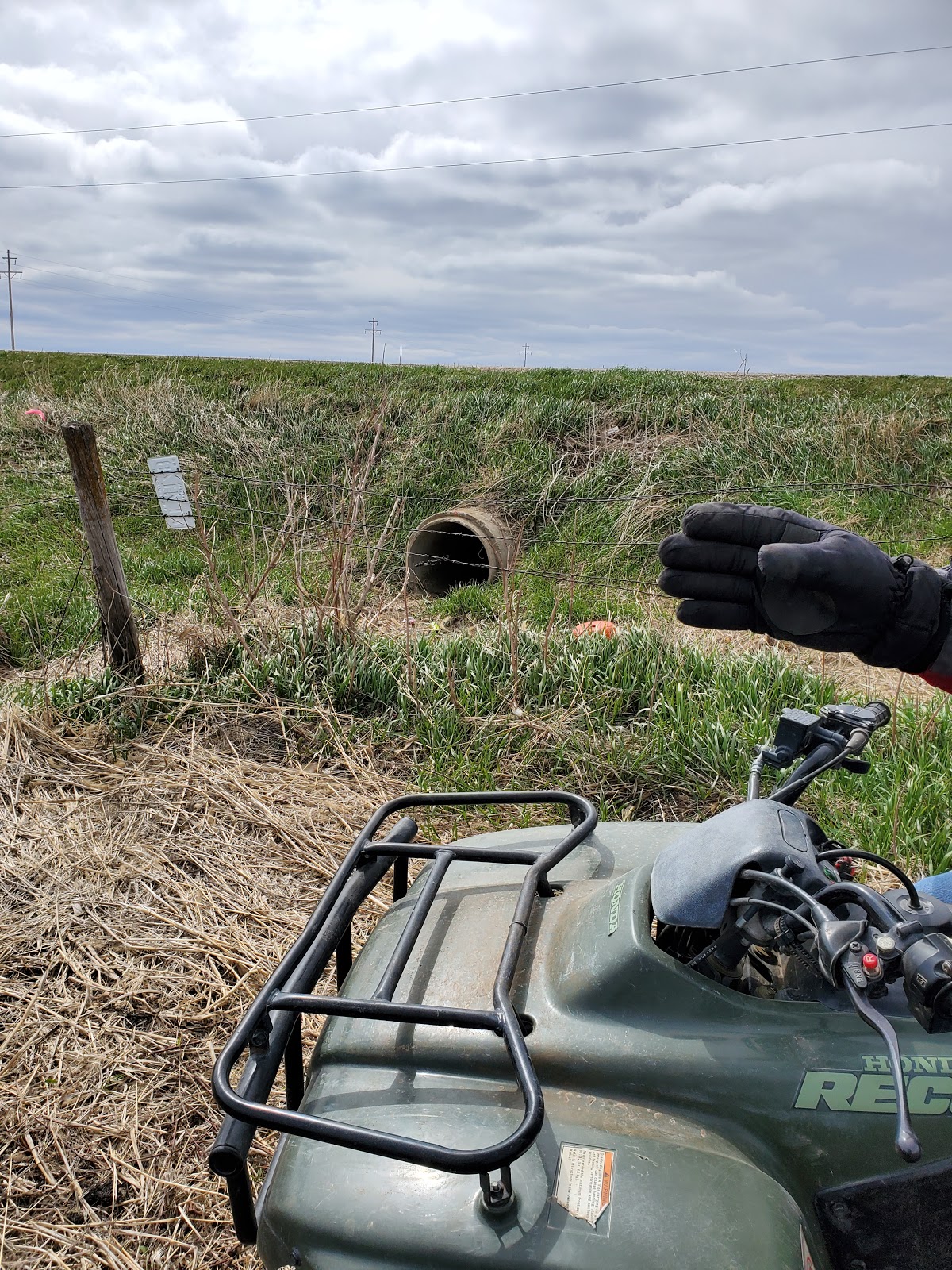
Image where runoff from grass waterway in adjoining field enters Mike’s field. The neighbor across the road implemented cover crops a few years ago. The grass waterway Mike is installing will start at this culvert and follow the natural flow of the land, where it will connect with another neighbor's grass waterway.
Tim is one of the few farmers in the area that is trying out strip-till/no-till practices and cover crops.
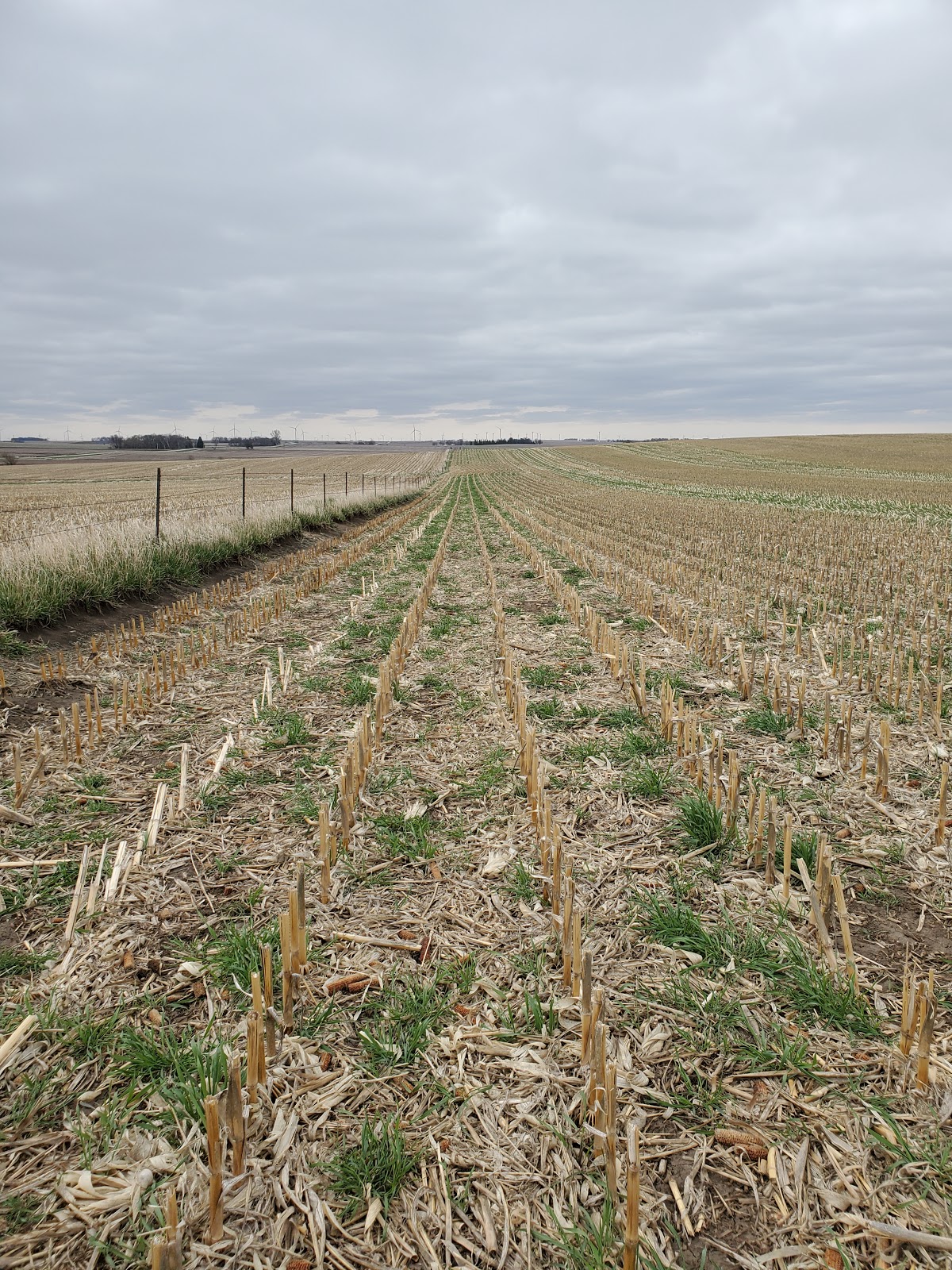
Photo: One of Tim’s fields with Winter Rye cover crops emerging.
I asked Tim how many farmers in the area are trying out cover crops and no-till. Tim said that about 5-10 years ago maybe 1 in 100 farmers were open to trying cover crops and/or no-till. Now, it’s maybe 1 in 20 farmers who are open to the idea or who have started implementing these practices. When I asked him what the reason for that is, his response was eye-opening.
He said, in the past decade we’ve had a lot of really dry years and a lot of really wet years. Farmers who planted cover crops outperformed farmers who didn’t during rainy springs because there were roots in the ground to help absorb water and control soil erosion. Farmers who did no-till outperformed farmers who didn’t during the drought years because their soil was able to hold and store water better than fields that were tilled.
Tim was talking about climate change resilience without saying the words climate change! Our political climate has polarized words like climate change. But that doesn’t mean people don't recognize that our weather is changing.
Mike tested the water running off his field for Nitrates before the grass waterway was installed and he’s going to test it again after it is established to see if there’s a reduction in nutrient runoff.
My visit to Mike’s farm gave me hope that there is a recognition that we have to change the way we farm. Not only is it in the interest of our water but it’s in farmers’ interests too! We still have a long way to go up in Buena Vista County considering I only saw three fields with cover crops on my drive up, but farmers and landowners like Mike and Tim are “planting the seeds” to show how we can take better care of our soil.
Resilience in the face of adversity in Floyd County
In early May, I drove up to Nashua in Floyd County to visit with a young farmer, Ethan Vorhes. Ethan raises non-GMO corn and beans, hemp, hogs, cattle and chickens. He farms 200 acres with his parents, wife, kids and Aunt on the farm that has been in his family since the early 1900s.
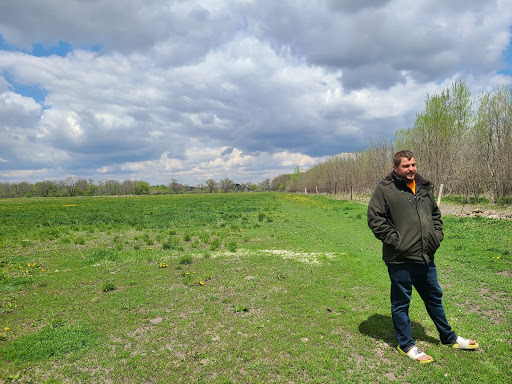
Images: Ethan Vorhes standing in one of his pastures.
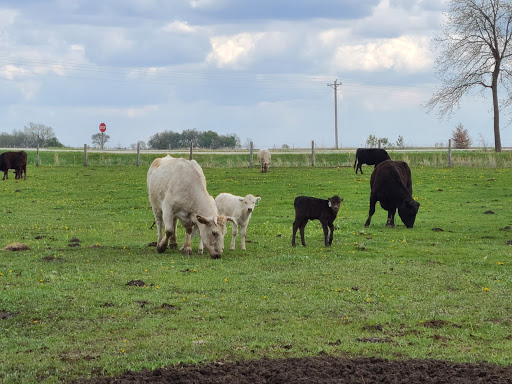
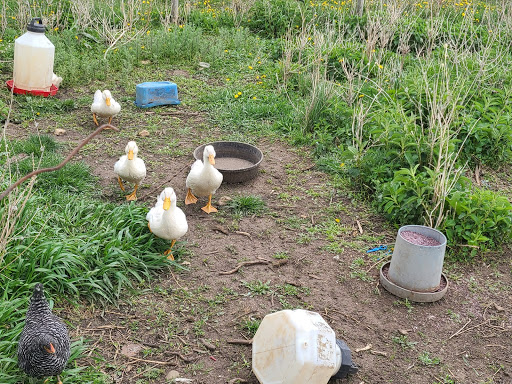
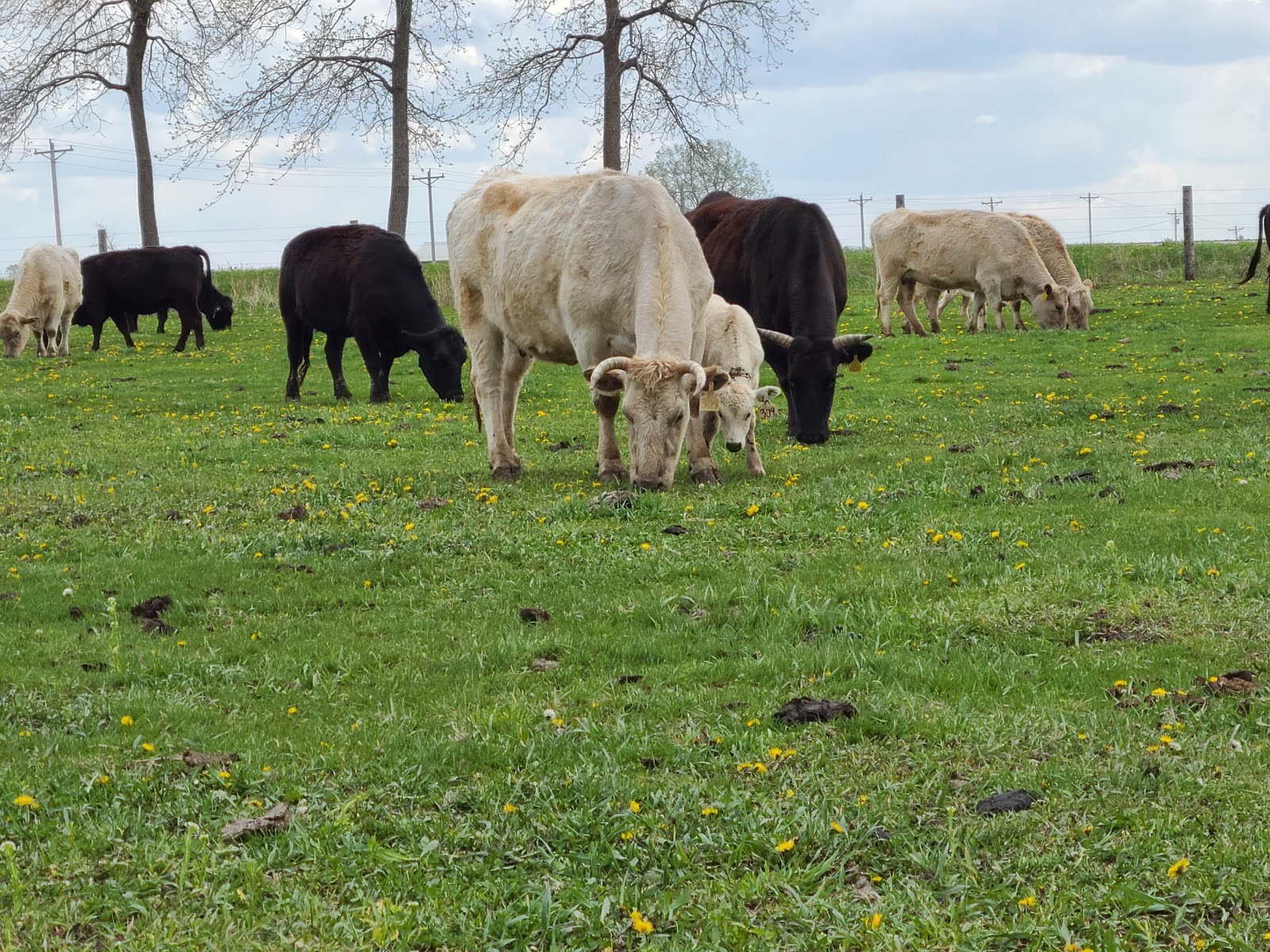
Image: Ethan’s cattle grazing and other animals enjoying the outdoors.
Ethan is focused on practices that build soil health and protect water. His specialty breed of Wagyu Cattle rotate between pastures and feed on a variety of grasses and perennials in his “cover crop cocktail”. He’s even experimenting with adding hemp to his grazing pastures!
Cattle raised on managed pasture is part of Sierra Club’s Soil Health policy for many reasons. Pasture protects the land with perennial roots in the soil year round, which in turn helps capture carbon from the atmosphere and stores it in the soil. And, livestock on pasture harvest their own food and spread their own manure. That lessens the carbon emissions from growing row crops to feed the livestock and reduces the chance that manure will runoff into water.
Ethan is eager to adopt regenerative farming practices and has a clear vision for what he wants his farm to become. He knows that his farm is on fragile karst bedrock which increases the chances of water, and whatever is in the water, leaching into the shallow aquifer.
But our system isn’t built to help farmers who aren’t using industrialized agriculture techniques.
It is very easy to get farm financing if you’re following the industrialized farming recipe - till the field, apply fertilizer or manure, apply pre-emergent chemicals, plant corn or beans, harvest corn and beans, leave soil bare, and repeat.
If you’re planting new crops, taking land out of row crops, or trying other innovative things, bankers are less likely to lend because it’s considered “risky”. I don’t know about you but I consider industrial farming way more risky than regenerative farming. This shows how we have a long way to go to make it easier for farmers to adopt good farming practices.
Ethan showed us around the area and pointed out dozens of sinkholes that have opened up - creating a direct path for runoff to enter the aquifer. Many rural residents in the area rely on well water. This is why Ethan is so passionate about building healthy soil - he understands that his farm can help water quality or hurt water quality. He wants to make sure the water that leaves his land does not have a negative impact on the drinking water for his neighbors.
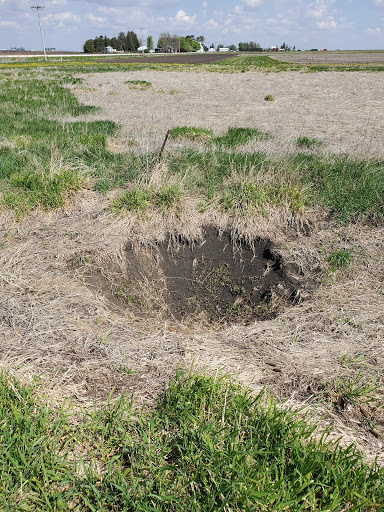
Image of one of many sinkholes near Ethan’s farm.
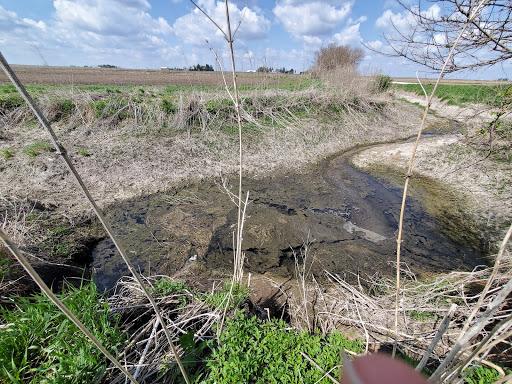
Image of massive sinkhole and runoff draining into the sinkhole near Ethan’s farm.
Visiting Ethan’s farm highlighted the need for investing in farmers who are dedicated to soil health. Our current industrialized agriculture system would not be economically feasible if we didn’t subsidize it with public dollars. We are literally paying farmers to use practices that harm our water, our air and our bodies. At Sierra Club, we’d rather see those tax dollars go to farmers like Ethan to make it easier for farmers to implement conservation practices and easier to access financing.
One example of shifting public dollars into regenerative agriculture infrastructure is the Small Artisanal Butcher bill that was passed by the legislature this year. The bill creates a program to fund new small regional meat lockers, improvements at existing small meat lockers, and farmers who want to start a mobile butchery business.
Industrial agriculture has put many local and regional meat lockers out of business. That forces farmers like Ethan to scramble to find a location to process their livestock. Last year, Ethan had to take his cattle from Northeast Iowa to Nebraska to have them processed because all the lockers in Iowa are full for at least a year. The industrial method of raising livestock treats the animals as widgets. All the widgets come into the factory farm at the same time and are ready for processing at the same time. That’s not always how it works on a small independent livestock farm. Not all the animals are ready at the same which makes it hard to schedule your processing time a year in advance.
Currently, independent small cattle farmers like Ethan market their livestock to individuals who purchase all or part of a cow. If Ethan had more reliable options for processing, he could market to grocery stores and restaurants - both are more stable incomes than marketing to individuals. Investment in regional infrastructure for small independent farms, like a local artisanal butchery program, opens the door for more farmers to start transitioning away from industrial agriculture.
We have a long way to go to build an agricultural system that protects our environment and our farmers but narratives we hear from the Farm Bureau and other agribusiness companies saying we can’t farm any other way simply aren’t true. Most of Iowa’s farmland has little to no conservation practices in place.
This summer we’ll continue to highlight farmers and landowners like Mike and Ethan to highlight the good things that are happening in rural Iowa.
Click here to read Sierra Club Iowa Chapter’s Soil Health Policy.
[1] Eller, Donnelle. ISU report: Iowa farm finances continue to erode, with 44% of growers struggling to cover costs. The Des Moines Register. November 14, 2019. https://www.desmoinesregister.com/story/money/agriculture/2019/11/14/iowa-farmers-struggling-financially-ag-economy-downturn-trade-war/4115343002/
[2] USDA. Conservation Choices: Grassed Waterway. USDA Natural Resources Conservation Service. https://www.nrcs.usda.gov/wps/portal/nrcs/detail/null/?cid=nrcseprd415210
[3] Shelton, David. Grassed Waterways a Standard for Erosion Control. University of Nebraska-Lincoln Institute of Agriculture and Natural Resources Crop Watch. June 27, 2008. https://cropwatch.unl.edu/grassed-waterways-standard-erosion-control
[4] Hillemann, Penelope. Prairie Strips Transform Farmland Conservation. American Society of Agronomy. January 30, 2019. https://www.agronomy.org/news/science-news/prairie-strips-transform-farmland-conservation/
Legislature Wrap-up – Wins and Losses, Things Not Addressed
Now that the legislature has adjourned and the governor has signed or vetoed all of the bills sent to her desk, it is a time to reflect on what good bills were passed by the legislators, what really awful bills were passed, what bills we successfully opposed that did not pass, and what bills we wish had been passed.
Good bills that were passed by the legislators
- Small butcheries revitalization - HF857. The bill provides economic incentives to small butcheries. Plus the bill sets up a task force to explore an artisanal butchery training program. This was signed by the governor.
So-so – some good parts and some bad - that were passed by the legislature
- Resource Enhancement and Protection (REAP) was extended to 2026, although remained underfunded at $12 million instead of its authorized $20 million and the legislation removed $1 million from open spaces (acquiring public lands) for use in state park repairs - HF860. REAP pays for parks and recreation and for protecting Iowa’s natural areas, water quality initiatives, soil conservation, and protecting historical resources. This was signed by the governor.
Really awful bills that were passed
- Voter suppression 1.0 - SF413. It is hard to pick which one is the worst, but my vote would be the voter suppression bill and the major overhaul of our election laws. It reduces the window for casting absentee ballots. The bill prohibits county commissioners of elections from sending an absentee ballot application to all voters and prohibits county commissioners of elections from exercising home rule powers with respect to the administration of elections. It allows the state commissioner of elections to issue guidance outside of the rulemaking process to clarify election laws. The bill makes failure to adequately perform voter list maintenance (AKA purging) an aggravated misdemeanor, leading to fines and incarceration. It mandates only a single drop box for absentee ballots and mandates it to be located near the office of the county commissioner, sets fines of $10,000 for technical infractions of election laws, and much more. The governor signed this bill.
- Voter suppression 2.0 - SF568, restricts who can deliver absentee ballots on behalf of a voter. This is was signed by the governor.
- Manure digesters are allowed for factory farms with 13,500 or more hogs or with 8,500 head of cattle or more - HF522. This will lead to even larger factory farms spread across the state. The governor signed this bill.
- Abolishes the Missouri River Preservation and Land Use - SF185. The governor signed this bill.
- Beginning farmer tax credits will now be allowed for renting factory farm buildings to a beginning farmer – SF619. The bill also provides for a revolving loan fund to support the expansion of biomass, biogas, and renewable natural gas, created via manure and methane digesters. The governor signed the bill.
Bills we successfully opposed that did not pass
- Changes to the forest reserve property tax credit - SF587
- Bottle deposit law changes - including increasing the distance to a redemption center – SF470, HF814, SF565, HF814, HF151
- Banning the sale of new electric vehicles - HF73
Bills we wish had been passed
- Moratorium on confined animal feeding operations (factory farms)
- Protecting black bears from hunting
- Reducing cost of open records, especially fees for redaction and legal review which makes viewing and receiving copies of public records cost prohibitive
- Radon testing in schools
- Climate impact statements and climate adaptation task force
- Solar energy tax credits extended, decoupled from the federal program, increasing the funding of the program which would reduce the waiting list for the tax credits
- Tax credit review committee, with recommendations for retiring tax credits
- Placing a cap on the research activities tax credit, which has resulted in the largest corporations in the state receiving huge tax refunds and paying no income taxes
- I-Will 3/8 cent sales tax to fund parks, outdoor recreation, and clean water initiatives, while retaining the funding formulas as they were originally envisioned when the law was passed in 2010
- Constitutional amendment on right of the people to a clean environment - HJR12
- Increasing the types of beverage containers that can be recycled plus increasing the handling fee for redemption centers from 1 cent to 2 cents
Join us for interesting and informative webinars
Webinar: Supreme Beef and Iowa's CAFO Problem: Sacrificing Iowa's Water for Big Ag
Since 2017, Sierra Club Iowa Chapter and Iowa Environmental Council have been organizing to stop Supreme Beef, an 11,600 head cattle feedlot, from building at the headwaters of Bloody Run Creek. Sadly, this isn’t the only example of CAFOs and industrial agriculture sacrificing our water. 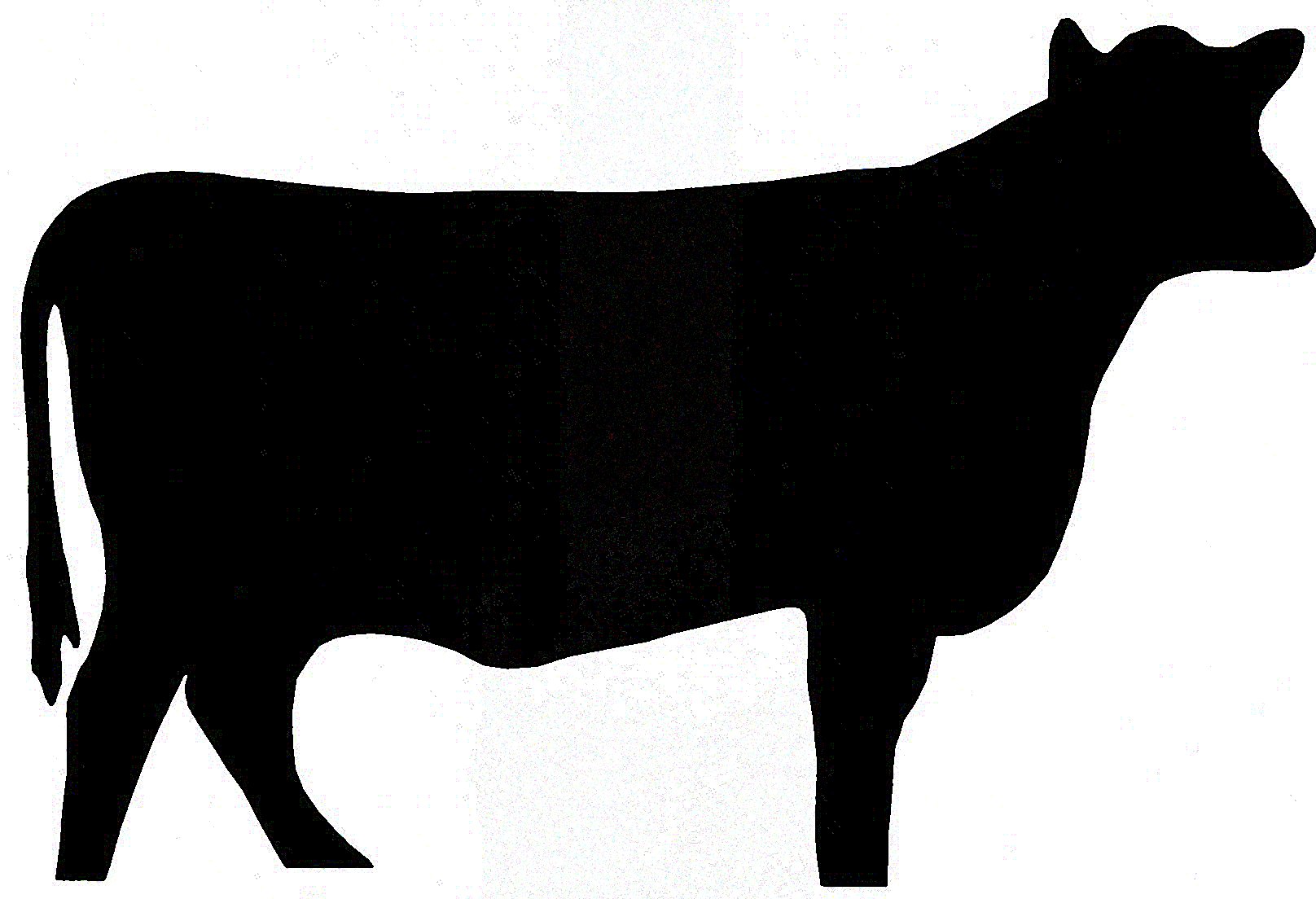
Join Sierra Club Iowa Chapter and Iowa Environmental Council for an eye-opening panel discussion about how Iowa is sacrificing our water for big ag on Tuesday, June 29, 2021, from 7:00pm - 8:30pm. RSVP here for access information. Our expert panelists will dig-in to the Supreme Beef CAFO fight as an example to show the impact the CAFO industry is having on water quality, how we got here today, and why we have to act now to clean up our water.
Panelists are
- Gene Tinker - Former Animal Feeding Operations Coordinator for the Iowa DNR
- Dr. Silvia Secchi - Associate Professor, Department of Geographical and Sustainability Sciences, University of Iowa
- Dr. Chris Jones, Research Engineer with IIHR Hydroscience and Engineering at the University of Iowa
- Tom Murray - Founding Member and President of Iowa's Coldwater Conservancy
Lunch and Learns
Every Friday at noon, we do a Lunch and Learn livestream. See us on Facebook at "Sierra Club Iowa Chapter". These will be recorded so you can watch them anytime. Topics will be selected based on what is happening during the week and will be announced the day before the livestream. During the legislative session, we cover issues coming before the Iowa legislature.
In case you missed our past webinars and lunch and learn sessions, you can still see them.
We hope you can join us.
Iowa Sierra Club Awards
The Iowa Chapter of Sierra Club honors activists and volunteers for their efforts to protect the environment. Please consider nominating someone for an award. Winners will be presented with their award at the annual meeting on September 26, 2021. Submit nominations by E-mail to iowa.chapter@sierraclub.org by July 30. The nomination must include:
- Award Category (see below for categories)

- Name of nominee
- Address and phone number of nominee
- Statement of why you think the nominee should receive the award
- Your name, address and phone number. If it is a group nomination, give the name of a contact person.
Award Categories
- Distinguished Service - For a Club member who has shown service to the Club over a number of years. This is the Iowa Chapter’s highest award.
- Activist Award - For a member who has served the Club in any capacity during the past year in a way that greatly promoted the goals and purposes of the Iowa Chapter of Sierra Club.
- Business Service Award - For a business or individual in business who has contributed significantly to environmental issues directly affecting Iowa.
- Environmental Journalism - For a person working in the news media who has contributed significantly to environmental understanding at a community, county, or state level.
- Steward of the Land Award - For a farmer or other individual whose agricultural practices promote soil conservation and/or other environmentally positive results.
- Public Service Award - For a legislative or governmental employee or appointee who has contributed significantly to environmental issues directly affecting Iowa.
- Environmental Educator Award - For an educator at any level of education who has contributed significantly to an increased understanding of the environment.
- Grassroots Award - For any individual whose contributions have resulted in significant change regarding the environment in a local community
Iowa Beyond Coal Launches Collaborative Climate Ribbon Project
By Katie Rock and Emma Colman 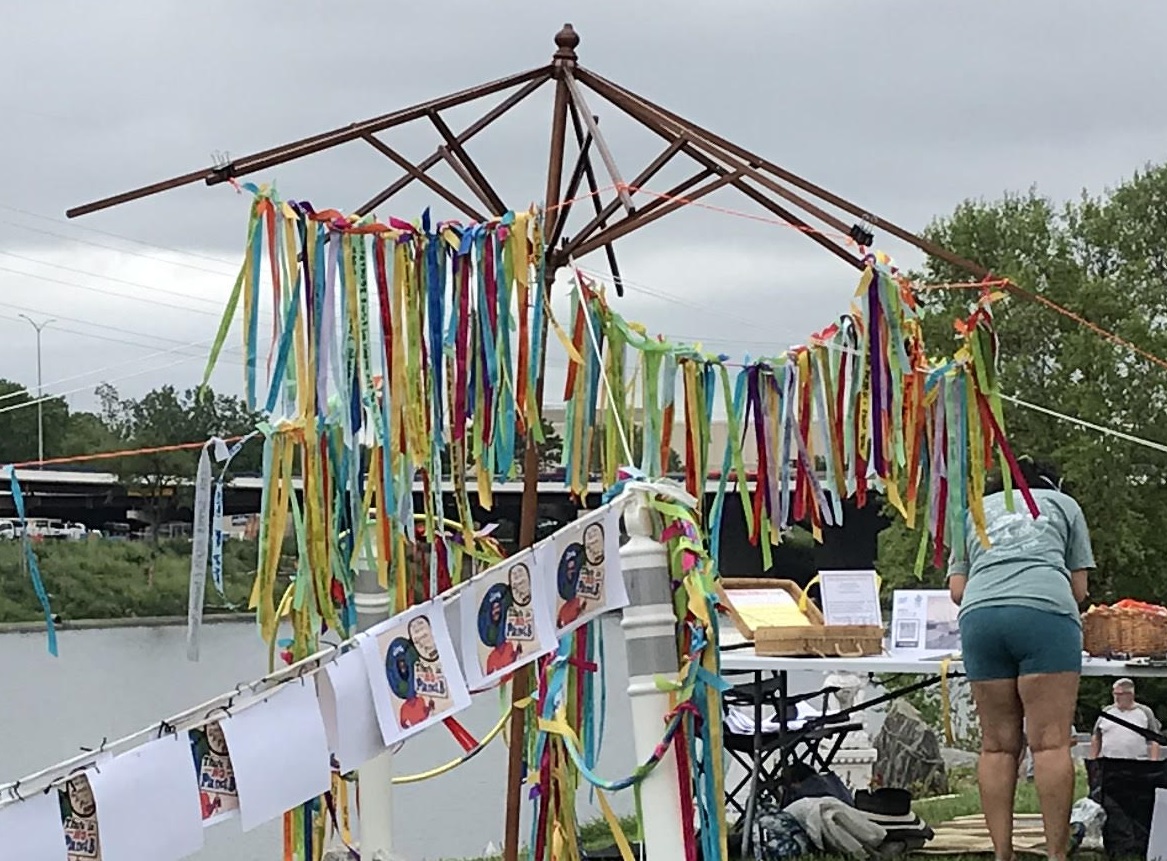
After a long year, people are stepping into the sun, getting out, and ready to mingle. In the spirit of dusting off the heavy dust of 2020, Iowa Beyond Coal launched a new collaborative effort with local allies in May - the Climate Ribbon Project. As allies in the push to engage people locally on climate change, we partnered with Women’s International League for Peace and Freedom, Iowa Citizens for Community Improvement and members of the Sunrise Movement and Des Moines Citizens Task Force on Sustainability to bring the Climate Ribbon project to the Dew Tour in Des Moines on May 22-23. The Dew Tour is an Olympic skateboarding qualifying event.
The Climate Ribbon Project uses art and ritual for individuals to grieve and share what we each stand to lose to climate chaos. First launched at COP 21 in Paris, the project creates a symbol of solidarity to unite in fighting climate change. Participants write on a piece of ribbon their response to the question, “what do you love and hope to never lose to climate chaos?” Then they tie their ribbon and add it to the tree structure.
Since 2015, groups all over the world have recreated the Climate Ribbon project. Anyone can participate and launch their own ribbon tree with a toolkit available online.
30 X 30 and Iowa
By Wally Taylor
Iowa is the most biologically altered state in the union.
- Of 36 million acres of land in Iowa, 30,563,878 acres are farmed
- Iowa ranks 49th in the amount of acres of public land owned by federal, state, and local governments
- Of the publicly-owned lands, about 50% are road right-of-ways - 919,405 acres
- Iowa Department of Natural Resources oversees 425,000 acres of land
- 245 lakes, 71 state parks and recreation areas, 4 state forests
- Including roads, parking lots, campgrounds, buildings, trails, golf courses, lawns
- 40% of the public land managed by the DNR is forested; 14% is water
- 29,000 acres is leased to farmers
The Iowa Legislature recognized years ago that we need to pay attention to what we have done to Iowa’s environment. In the preamble to the Resource Enhancement and Protection Act, the legislature said:
- "The citizens of Iowa have built and sustained their society on Iowa’s air, soils, waters, and rich diversity of life. The well-being and future of Iowa depend on these natural resources.
- Many human activities have endangered Iowa’s natural resources. The state of Iowa has lost ninety-nine and nine-tenths percent of its prairies, ninety-eight percent of its wetlands, eighty percent of its woodlands, fifty percent of its topsoils, and more than one hundred species of wildlife since settlement in the early 1800’s. There has been a significant deterioration in the quality of Iowa’s surface waters and groundwaters.
- The long-term effects of Iowa’s natural resource losses are not completely known or understood, but detrimental effects are already apparent. Prevention of further loss is therefore imperative.
- The air, waters, soils, and biota of Iowa are interdependent and form a complex ecosystem. Iowans have the right to inherit this ecosystem in a sustainable condition, without severe or irreparable damage caused by human activities."
The Biden administration recently issued what it calls its 30 X 30 plan – a proposal to conserve 30 percent of the county’s land and water by 2030. This is a boost in changing how government officials view the natural world. This is a step in the right direction. The plan understandably walks a political tightrope. It recognizes the importance of preserving natural areas, restoring wildlife habitat, and improving water quality, and other features of the natural environment. But it also recognizes that much land is in private ownership and that it will be difficult to convince those owners to conserve their land. Unfortunately, the plan does not really address how to solve this conundrum. However, the plan fits in with the Iowa Chapter’s campaigns to protect Iowa's natural areas, to restore Iowa's water quality, to promote sustainable agriculture, and to provide funding for this work.
Sustainable Agriculture Campaign
In Iowa, of course, most of our land and water is impacted by agriculture. The losses to our prairies, wetlands, woodlands, and soil enumerated in the REAP preamble quoted above are primarily due to agriculture. We have plowed up our prairies, drained our wetlands, cut down trees to create more cropland, discharged manure and fertilizer into our waters, and tilled highly erodible land without adequate conservation practices. The Iowa Chapter’s sustainable agriculture campaign proposes a better way to farm that is better for farmers, consumers, and the environment.
There are many ways we can transform agriculture in Iowa to meet the 30 X 30 plan. Here are a few ideas. First and most importantly, we need to tie public subsidy payments to conservation practices. We should not fund agriculture practices that contribute to climate change, pollute our air and water, and degrade our soil. Second, any land that is rowcropped in a two-year floodplain should be returned to prairie or wetland. Third, we shouldn’t farm highly erodible land without proper conservation practices in place. Fourth, we should follow the 5 Principles of Soil Health – cover soil at all times, minimize soil disturbance, keep living roots in the soil at all times, plant diversity, and integrate animals on pasture. Fifth, we should incentivize landowners to restore woodlands and install prairies and wetlands through programs like REAP, woodlands property tax exemption, CRP, and other public programs. We have to show that this is profitable for farmers.
Farmers who are practicing the 5 Principles of Soil Health have higher yields, lower risk, and are more resilient in the face of a changing climate. But, our farm subsidy programs have to change as well. Public dollars should not be used for farming practices that degrade soil, water, air and farmers’ livelihoods. If we redirected farm subsidy programs like EQIP, Guaranteed Loans and others, we can make sure a transition to 30 X 30 is successful.
Private property owners not involved in agriculture can also be part of a conservation effort. Many landowners in Iowa have entered into conservation easements. More such easements must be created. More thought must be taken before building new highways or expanding urban sprawl.
Campaign to restore water quality 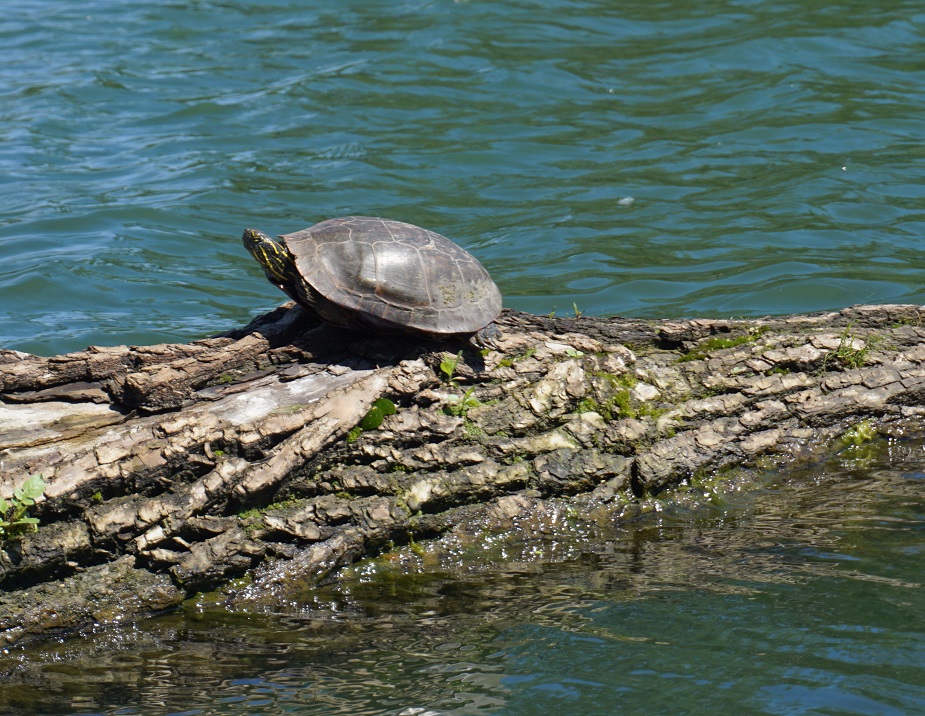
Restoring water quality restores habitat for wildlife and native plants. It also provides safe drinking water and allows for safe recreation.
Campaign to protect Iowa's natural areas, rewilding other areas
Focusing on Iowa, the Iowa DNR has 425,000 acres of public land under its jurisdiction. That is 3.9% of Iowa’s total land area. And county conservation departments, private conservation organizations, and some private individuals also have land that is being conserved. Even with all of that, a very small portion of the state is being conserved. We are far short of the goal of 30 percent. It will involve all of us thinking about conservation and implementing conservation practices.
We already have a couple of places where we can start to find areas in Iowa to conserve. The Iowa Sportsman’s Atlas has county-by-county maps showing natural areas. Many, if not most, of those areas could be expanded. The Iowa Wildlife Action Plan, prepared by Iowa DNR, is a comprehensive analysis of protect and restore wildlife habitat in Iowa. It contains detailed plans and maps to carry out the goal of increasing wildlife habitat.
Funding through REAP and I-Will
The state law already has funding mechanisms in place to support this work, through the REAP program and through the I-Will sales tax. The legislature needs to implement the sales tax without changes in the funding formulas. It also needs to fully fund the REAP program.
Sources
Tammie Krausman, “Iowa’s Public Lands”, Iowa Department of Natural Resources, January, 2018
Over 1M pigs call this area home”, Cedar Rapids Gazette, April 21, 2019
Figures from Natural Resources Council of Maine, as reported in Erin Jordan, “Public Land Buys at Risk”, Cedar Rapids Gazette, April 28, 2019
Iowa Natural Resource Commission, Iowa Department of Natural Resources “2019 Annual Report and Recommendations”, January 30, 2020
Erin Jordan, “Iowa DNR goes one year without permanent director”, Cedar Rapids Gazette, May 1, 2019
Chris Jones, “Iowa needs public land”, Bleeding Heartland, May 18, 2019
Volunteer for the Iowa Chapter
Almost everything we do is done by volunteers like you. If you would like to volunteer for the Iowa Chapter, please let us know by sending an E-mail to Iowa.chapter@sierraclub.org. Or sign up by using the on-line form. There are many opportunities for you to make a difference:
-
making phone calls
-
developing graphics for banners and flyers
-
working on legislative issues
-
working on elections
-
fundraising
-
organizing events
-
joining an issue committee
If you would like to join a committee on the Peoples Budget, sign up here please fill out our People's Budget Volunteer Form so we can build our organizing team for this project. A large number of Sierra Club issues require some involvement with Iowa's state budget. Budgets reflect theories of government. Iowa’s political conversation rarely moves beyond the notion that government’s primary responsibility is to grow the economy. Hence we give corporations tax breaks, but slash funding for health care, environmental protections and public interest research at our three state universities. We hold a different view of government and that is government is the trustee of all the things we share - public roads and bridges, water, wildlife, air, public universities, state parks, education and public health. Therefore, protecting, enhancing and restoring our shared public wealth is the central responsibility of government. We must tie the budget to our priorities.
If you would like to join our legislative action team, sign up here. Keep on top of what is happening at the Iowa legislature. Be alerted when you should contact your legislators about pending legislation.
If you would like to join the team on a public interest research agenda, send an e-mail to iowa.chapter@sierraclub.org. The Iowa Chapter of the Sierra Club is forming a team to design a public interest research agenda, determine needed policies, and develop a strategy to implement the public research agenda. This project will be a year-long study and design group. We are especially looking for scientists who are working in climate, public health, sustainable agriculture, and related fields.
Contribute to the Iowa Chapter
Sierra Club - the best bet for achieving bold solutions to Iowa’s environmental problems
Sierra Club is Iowa’s oldest and largest grassroots environmental organization. Not only that, we are the best bet in the state for achieving bold solutions to Iowa’s environmental problems.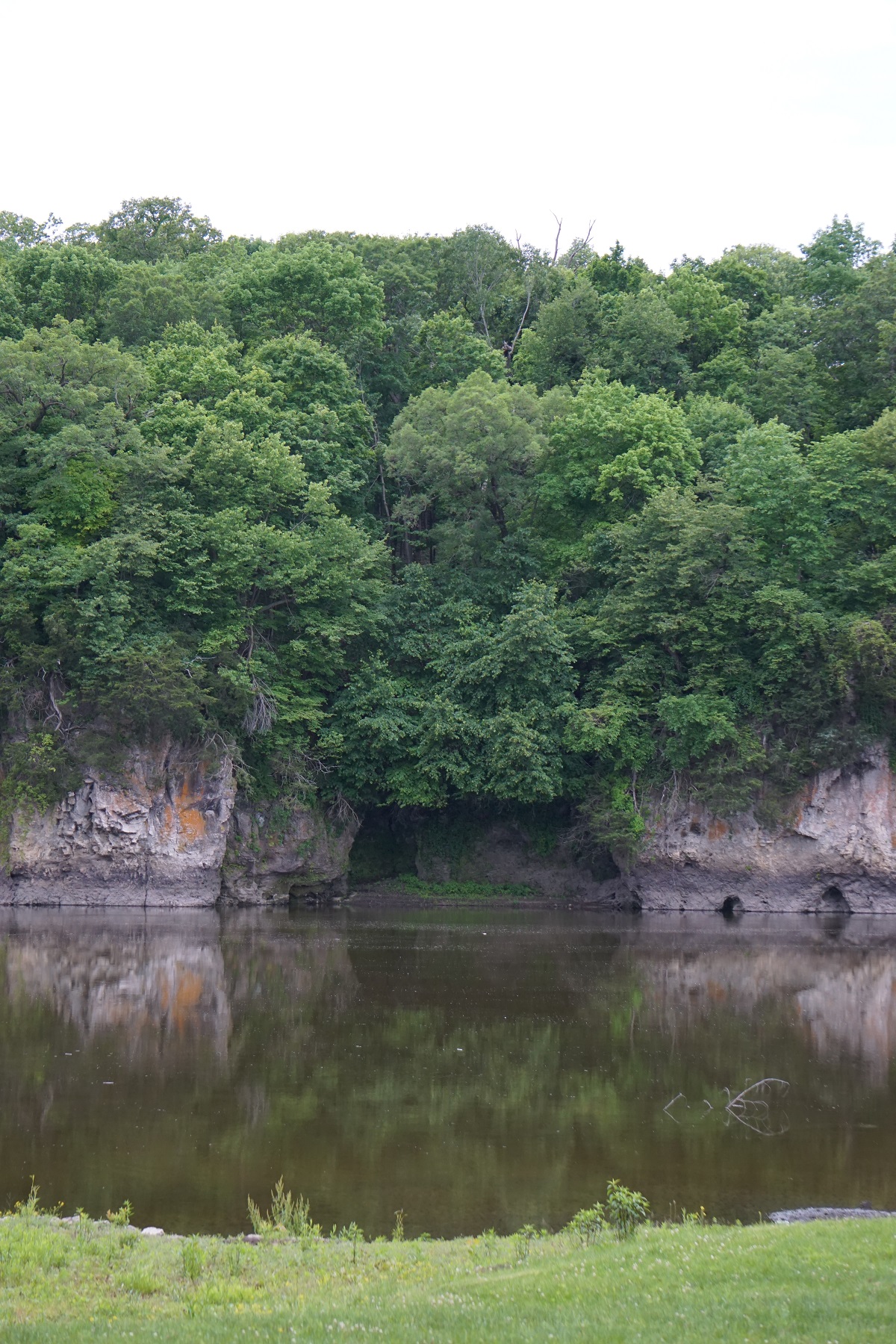
We work in the courts, before Iowa’s public agencies, and in the halls of the legislature. The Iowa Chapter's effort to protect the environment takes financial support. The Chapter receives very little financial support from the national Sierra Club. Can we count on you for a donation to ensure even more victories? Your contribution will be put to work here in Iowa on issues that affect every day Iowans – water quality, clean air, protection of Iowa's soil, parks and natural areas, and a strong democracy. The Iowa Chapter is relentless in fighting back bad legislation that affects every one of us.
Your non-deductible contributions make it possible for us to fight bad legislation and to promote good legislation. We appreciate your past and on-going support of these efforts. You can make a non-deductible donation with a credit card. A non-deductible donation supports the Chapter's effective, citizen-based advocacy and lobbying programs. If you prefer, a non-deductible check can be written to the Sierra Club Iowa Chapter and mailed to:
Treasurer
Sierra Club, Iowa Chapter
PO Box 1058
Marion, IA 52302
You can also make a tax-deductible donation with a credit card. Tax-deductible activities are limited to public interest education, research and legal actions. A deductible check can be written to the Sierra Club Foundation with “Iowa Chapter” written in the memo line.
Easier yet, become a monthly donor.
Thank you for your support.
Photo, Palisades Kepler State Park.
Donate your used vehicle
As the Sierra Club Foundation's Iowa Chapter continues to raise charitable funds to support its work in Iowa, won’t you consider participating in our vehicle donation program? Our partners over at CARS have made the process of donating your unused or unneeded car, truck, motorcycle, boat or RV easy, efficient and secure. They’ll take care of everything from picking up your vehicle to sending you a tax receipt for your generous gift. To learn more about The Sierra Club Foundation's Iowa Chapter vehicle donation program, please call 844-674-3772. Or visit our webpage to get started today!
Sierra Club Foundation promotes climate solutions, conservation, and movement building through a powerful combination of strategic philanthropy and grassroots advocacy. The Foundation is the fiscal sponsor of Sierra Club’s charitable environmental programs.
For more information
| When | Earliest: Latest: |
| What |
|
| Word or Phrase | Word or phrase to search for: |
| Leader | All or part of leader name to search for: |
No Matching Activities Found
Loading
| Date | Activity (click title for full description) | Sponsor | Category | Type | Difficulty | Links |
|---|
Loading ...
 Outing
Outing Club support event
Club support event  Social event
Social event  Activist event
Activist event  Multiple events (map only)
Multiple events (map only)
